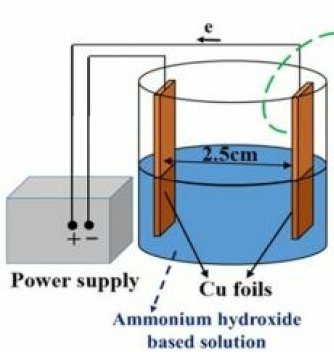source: Science Daily news
Copper based nano structures have gained much attention in today’s modern devices. A team of Nano-fabricated Energy Devices lab in University of Tehran have used an ultra-fast and simple method for fabrication of different types of these structures. By applying electric field in the ammonium hydroxide based solutions dense arrays of copper based nanostructures in short duration of time in the order of below 1 min (or even in the order of just 1 second) have been achieved.
Applying electric field in the ammonium based solution has been used for the fabrication of different forms of copper hydroxide nanostructures. The supercapacitance performance of synthesized nanostructures has been investigated and high specific capacitance of 178 F/g at scan rate of 20 mVs-1 was obtained. The fast, simple and low cost electric field enhanced synthesis method proposed here can be used for fabrication of high performance Cu(OH)2 nanostructured supercapacitance electrodes.
Conducting electric current in the solution results in the efficient nano structure formatin on the copper substrate. using this technique high performance copper hydroxide supercapacitor electrodes have been fabricated.
In addition, electrochemical properties of the fabricated nanostructures have been investigated, showing specific and areal capacitances larger than other reports on copper hydroxide electrodes. We believe that these structures have great potential for energy devices, such as supercapacitors and lithium ion batteries.
This research was funded in part by Iran National Science Foundation (INSF).
Authors of this paper are Sajad Sepahvand from University of Tehran, Nano-fabricated Energy Devices Lab, Dr. Shahnaz Ghasemi from Sharif University of Technology, Institute of Water and Energy, and Dr. Zeinab Sanaee from University of Tehran, Nanofabricated Energy Devices Lab. Corresponding authur for this study is Dr. Zeinab Sanaee, [email protected].
The paper can be found in NANO journal.
featured image credit: NANO journal































